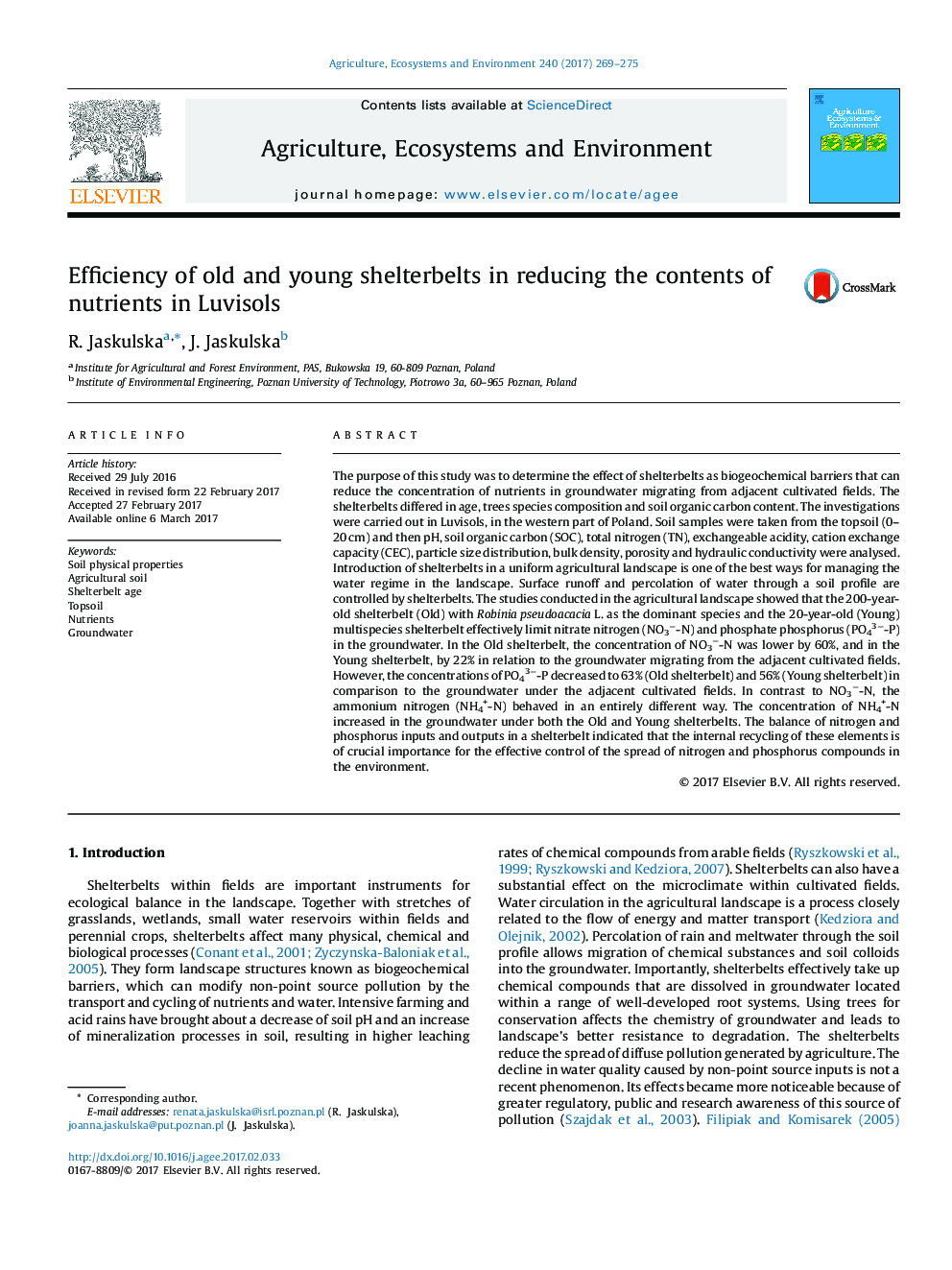| کد مقاله | کد نشریه | سال انتشار | مقاله انگلیسی | نسخه تمام متن |
|---|---|---|---|---|
| 5538175 | 1552012 | 2017 | 7 صفحه PDF | دانلود رایگان |
عنوان انگلیسی مقاله ISI
Efficiency of old and young shelterbelts in reducing the contents of nutrients in Luvisols
دانلود مقاله + سفارش ترجمه
دانلود مقاله ISI انگلیسی
رایگان برای ایرانیان
کلمات کلیدی
موضوعات مرتبط
علوم زیستی و بیوفناوری
علوم کشاورزی و بیولوژیک
علوم زراعت و اصلاح نباتات
پیش نمایش صفحه اول مقاله

چکیده انگلیسی
The purpose of this study was to determine the effect of shelterbelts as biogeochemical barriers that can reduce the concentration of nutrients in groundwater migrating from adjacent cultivated fields. The shelterbelts differed in age, trees species composition and soil organic carbon content. The investigations were carried out in Luvisols, in the western part of Poland. Soil samples were taken from the topsoil (0-20Â cm) and then pH, soil organic carbon (SOC), total nitrogen (TN), exchangeable acidity, cation exchange capacity (CEC), particle size distribution, bulk density, porosity and hydraulic conductivity were analysed. Introduction of shelterbelts in a uniform agricultural landscape is one of the best ways for managing the water regime in the landscape. Surface runoff and percolation of water through a soil profile are controlled by shelterbelts. The studies conducted in the agricultural landscape showed that the 200-year-old shelterbelt (Old) with Robinia pseudoacacia L. as the dominant species and the 20-year-old (Young) multispecies shelterbelt effectively limit nitrate nitrogen (NO3â-N) and phosphate phosphorus (PO43â-P) in the groundwater. In the Old shelterbelt, the concentration of NO3â-N was lower by 60%, and in the Young shelterbelt, by 22% in relation to the groundwater migrating from the adjacent cultivated fields. However, the concentrations of PO43â-P decreased to 63% (Old shelterbelt) and 56% (Young shelterbelt) in comparison to the groundwater under the adjacent cultivated fields. In contrast to NO3â-N, the ammonium nitrogen (NH4+-N) behaved in an entirely different way. The concentration of NH4+-N increased in the groundwater under both the Old and Young shelterbelts. The balance of nitrogen and phosphorus inputs and outputs in a shelterbelt indicated that the internal recycling of these elements is of crucial importance for the effective control of the spread of nitrogen and phosphorus compounds in the environment.
ناشر
Database: Elsevier - ScienceDirect (ساینس دایرکت)
Journal: Agriculture, Ecosystems & Environment - Volume 240, 1 March 2017, Pages 269-275
Journal: Agriculture, Ecosystems & Environment - Volume 240, 1 March 2017, Pages 269-275
نویسندگان
R. Jaskulska, J. Jaskulska,